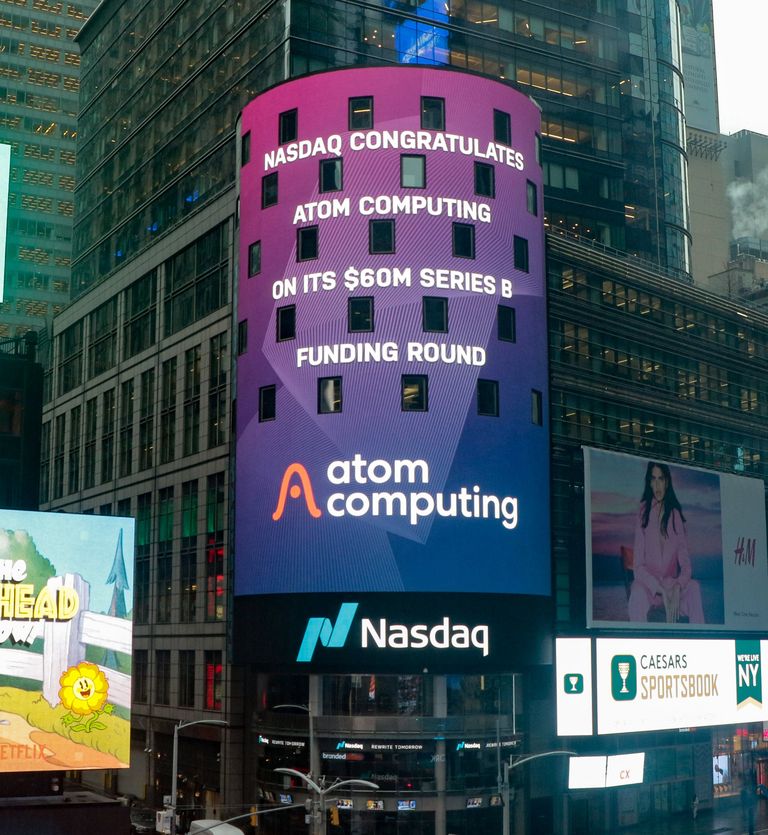The Neutral Atom Approach to Quantum Computing

Curtis McKee February 22, 2022
Times are changing rapidly in the world of computing. Moore’s Law, which has been the North Star for microprocessor design for over a half century, has hit a practical wall on scaling performance and as a result, gains from silicon manufacturing process node reduction improvements no longer offer the same bang for the buck. In fact, it’s been a long time since microprocessor design enjoyed 2x the performance improvement for every 2 years at a fixed power and cost, as Moore’s law expected. The flattening of the curve in classical computing performance has opened the door to the advancement of groundbreaking alternative computing methods such as Quantum Computing. It’s not an overstatement that if its promise is met, Quantum Computing will be revolutionary, taking minutes to solve a problem that would take today’s state of the art supercomputer thousands of years to simulate. It’s easy to see why quantum computing is attracting so much attention today.
Over the past 20 plus years, Third Point Ventures has been an active lead investor in the advancement of classical computing technologies at the semiconductor, software, hardware platform, and cloud infrastructure levels. We are excited to announce our investment in the “subatomic level” of computing via our partnership with Berkeley, CA based Atom Computing, a leader in neutral atom-based Quantum Computing development.
In the Quantum Computing landscape, there are several fundamental technical approaches that attempt to balance the key dependences in making Qubits, the basic unit of information in quantum computing (analogous to the classical “bit” of a traditional computer). Key Qubit dependencies include but are not limited to Fidelity (a measure of the quality of a Qubit i.e. the opposite of error rate and the measure of closeness of two quantum states), Coherence (length of time a Qubit stays in a readable quantum state), Operating Temperature (in some cases Qubits need to be cooled to close to absolute zero micro-Kelvins or about-459 degrees Fahrenheit for quantum properties to be exhibited), and Noise (both conventional and quantum noise affects Qubit Fidelity and Coherence times).
With these dependencies in mind, our focus turned to the leading quantum hardware modalities (approaches to making a Qubit) for building a quantum computer and came to a consensus that the neutral atom approach and the single photon* approach have the greatest scaling potential to build a “useful quantum computer” (i.e., a 1 million Qubit system) in the shortest amount of time.
We discounted other leading approaches (Superconducting Circuits, Trapped Ions, Anyons, Quantum Annealing and Quantum Dots) for different scaling and performance reasons and challenges. For example, Superconducting systems have physical scaling limitations due to their system cooling constraints and short coherence times, while Trapped Ion systems also lag on coherence and how many Qubits a given system can have. Neutral Atom and Single Photon approaches do not have the same constraints or performance limitations and will scale up faster over time.
Atom Computing’s specific neutral atom approach using “nuclear-spin” Qubits to building a scalable quantum computer is promising. Their hardware system allows for very high Qubit coherence (>40 seconds), which gives more time to perform necessary error correction. Neutral atom quantum systems use lasers to sub-atomically trap and cool atoms in free space providing the potential for scaling to 100K’s of Qubits or greater in a single system. These lasers, known as optical tweezers, can also precisely move atoms in a vacuum chamber and has several advantages for scaling up atoms into uniform two- or three-dimensional arrays for greater performance and system fidelity. Finally, neutral atoms are not “charged” like an ion, thus are less susceptible to noise from other nearby atoms, giving their Qubits characteristically very high fidelity and coherence times.
Under the strong technical leadership of co-founders, Dr. Ben Bloom and Dr. Jonathan King, Atom Computing has proven out their 1st generation system, reaching 100-Qubits per system in just two years, which is faster than any other quantum company thus far. We’re convinced their path of innovation to build larger Qubit systems is going to continue at a true Moore’s Law like pace. Now with a seasoned executive, Rob Hays (previously at Intel and Lenovo) at the helm, Atom Computing is on a competitive trajectory to obtaining Quantum Advantage leadership in the next several years. Third Point Ventures is thrilled to lead Atom Computing’s Series B investment along with a great group of forward-thinking investors from Innovation Endeavors, Venrock, Prelude, and Prime Movers Lab, and excited for the road ahead into the Quantum realm. Let’s go!
*Third Point Ventures is also an investor in PsiQuantum’s Series E financing (they employ the single photon approach).
